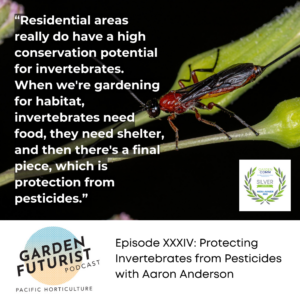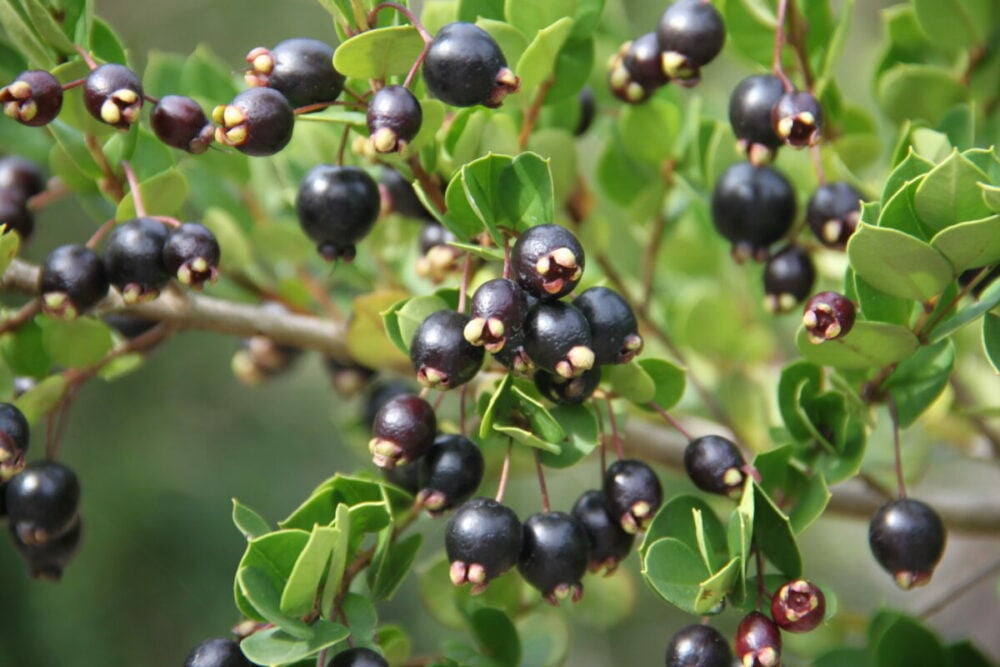
American Penstemons

Contributor
- Topics: Plants You Need
There are about two hundred and fifty penstemons, all but one of which are native to North America. From her experience with them the author suggests a few for gardeners. Mrs. Schmidt’s Growing California Native Plants was published in 1980 by University of California Press.
Penstemons are entirely of North America except for one: Penstemon frutescens which is from eastern Asia. Gardeners find them fascinating, with flowers in colors from delicate to vivid and lively on plants of many sizes and shapes. Furthermore there is seldom to be found within a single genus the wide assortment of herbaceous, evergreen, and woody perennials, most of them worthy of the gardener’s attention, that occurs among penstemons. For members of the American Penstemon Society* especially they are a continual source of delight. In the Society home gardeners dabble in selecting chance hybrids while professionals study the genetics of the genus toward creating new forms with superior traits.
[sidebar]
*American Penstemon Society, Box 450, Briarcliff Manor, NY 10510
[/sidebar]
In the following selection there are penstemons from many regions and varied habitats in North America. All have proven adaptable in gardens however, given the proper situation, water and drainage. It speaks well for the versatility of penstemons that they can fill so many places in the garden. There are those suitable for rock gardens, rock walls, slopes and raised borders. Others are best where drought tolerant plants are grown, and a few adapt to groups of mixed flowers.
The culture of penstemons depends somewhat of course on the plant’s original habitat. Many come from arid situations, with rocky or gravelly soil, and for these sun and well drained soil are necessities. A few are native to meadows and these will tolerate regular watering and light afternoon shade. With few exceptions they may be watered during their periods of active growth and flowering, after which the soil can be allowed to dry out. Mulching and fertilizing are seldom recommended as rich soil hastens the growth and shortens the life of most. Penstemons grow readily from seed which is generously provided. Some seeds are slow to germinate and for these cold stratification is recommended. Many penstemons may also be propagated from tip, or from basal cuttings. I am greatly indebted to the Bulletin of the American Penstemon Society for information on these plants, as well as for the inspiration to delve deeply into their history.
Penstemon pinifolius is often called the little firecracker because of its bright red or scarlet flowers. Native to the mountains of New Mexico and southeastern Arizona, it has a long history as a garden plant. In both my Los Gatos and present mountain gardens it has flourished and persisted for many years, but reports from other parts of the country suggest that it is not always so obliging. It is a low, compact plant and the stems closely set with rich green needle-like leaves give it the look of a heather when out of flower. Some rock gardeners have trained plants into great flowing mats which are spectacular in bloom. Slender tubular flowers are borne on six- to eight-inch stems from late June into July, and often into late summer. Its requirements include coarse soil, sun, with some high afternoon shade in hot climates, and moderate amounts of water. It is a gem for rock gardens, walls and crevices.

Penstemon clutei is native to the Sunset Crater area of Arizona where it grows with several other penstemons in pure pumice. It is a tall, slender plant with several stems from a semi-woody base. Basal leaves are gray-green, thick and elliptic with toothed margins. In June the upper stems bear widely spaced slender tubular flowers which flare like trumpets. Their color is dusky rose-pink into which a trace of vermilion seems to have been mixed. It is often described as “a queer shade of pink.” Considering its native habitat, it is surprising that this penstemon is adaptable to cultivation. It has been recommended for normal, watered borders and I have grown it in such a situation, but recently transplanted it to a semi-dry area where it is now flourishing with other penstemons, calochortuses and brodiaeas. I fully expect that it will persist here longer than in a well watered border.
Penstemon serrulatus, Cascade penstemon, is native to moist woods and rock faces of the humid transition zone west of the Cascade Mountain crest. Compared with the firm leaved penstemons, it has a soft, pliable look. The long, oval, bright green leaves become clasping on the upper stems, and are conspicuously toothed on the margin. Clusters of flowers come from the upper leaf axils, generally several to a stem. The flowers are small expanding tubes of bright blue-purple, varying to purple, but with white flowers occurring occasionally among seedlings. It does best in high broken shade, or under deciduous trees, and needs water regularly. The Cascade penstemon is pretty among other perennials, such as campanulas, columbines, and the native Heuchera macrantha. It is considered to be one of the most adaptable, and is cold tolerant. By mid-autumn plants die back, and may be cut to the basal leaves.
Penstemon smallii is found in light woodland from North Carolina to Tennessee and is popular in eastern gardens. The handsome basal leaves are oval and crinkly with purplish veins and stalks. In contrast the stem leaves have no stalks, are broad at the base and taper to a sharp point. Flowers occur on the tips and upper stems in open clusters held slightly away from the stems which gives them an airy effect. They are long, flattish tubes with a prominent, jutting lower section, lilac in color, verging on pink, deeper in the throat and paler at the opening, with wispy white hairs. Plants reach two or more feet in height. They are a pleasant addition to a mixed border where I have recently grown them with Campanula glomerata. Penstemon smallii is somewhat heat and drought tolerant, but in my garden it thrives with moderate amounts of water and high afternoon shade. Volunteer plants can be expected, but often come in unlikely places, such as edges of hard packed paths. It has only volunteered sparingly for me so I grow a fresh supply every few years. Interesting variations in leaf size and shape among seedlings have been recorded by members of the Penstemon Society.
Penstemon jamesii is from the grasslands of New Mexico, southeast Colorado into west Texas where it often occurs in attractive masses. Sturdy stems up to twenty inches tall are well clothed with leaf-like bracts of pale bluish-green which continue to the flowers, almost detracting from their appearance. Linear basal leaves occur in tufts. The flowers open in a dose terminal spike from late May into June. They vary from soft lavender to lilac and pink, and have abruptly expanding lips which show the contrasting deep yellow stigma. P. jamesii prefers a warm situation, accepts moderate amounts of water, and is dependable. While it is a pleasant plant, it is no doubt much more effective in the meadows and light woodlands of its homeland.

In general appearance and for garden purposes, the three Mexican penstemons I have grown, Penstemon filisepalus, P. kunthii and P. campanulatus, are similar. All are tall and slender, two to three feet or more, with several sturdy stems and many side branches. Stems are exceptionally leafy with dark green, lanceolate, toothed leaves which remain evergreen. P. filisepalus has narrow, tubular flowers of a modified shark’s head shape, of scarlet or blood-red. P. kunthii has slightly larger flowers which vary in color to include wine, crimson, and purple. P. campanulatus has rather pouchy bell-shaped flowers in attractive shades of blue, lavender, pale and deep purple, often with a rosy cast. Plants tend to become floppy with too much water and rich soil, and P. filisepalus and P. kunthii grow on a southeast slope where they are watered sparingly. I planted P. campanulatus in a mixed flower border with ample water where it eventually flopped over with the weight of many branches. It was a delight however, for its generous supply of large bell-shaped flowers which blend nicely with ‘Blue Lace’ petunias, annual asters and summer phlox. These Mexican penstemons and their progeny are especially valuable for their long flowering period — from July until frost, for their clear, bright colors, and for their adaptability and ease of culture. While in flower hummingbirds visit them constantly providing an always-moving aspect to the planting.
Share:
Social Media
Garden Futurist Podcast
Most Popular
Videos
Topics
Related Posts

Low Maintenance Gardens – Better for Pollinators and People
Autumn 2022 “I come out every day. It’s therapy, my meditation.” Janet’s young garden transformed from overgrown, invasive plants to mostly natives. The dailiness of

Calochortophilia: A Californian’s Love Affair with a Genus
Summer 2022 I can chart the progression of my life by Calochortus. For the last two decades, at least. As a teenage girl growing up

Pacific Plant People: Carol Bornstein
Spring 2022 Public gardens play a key role in demonstrating naturalistic planting design, selecting native and adapted plants for habitat, and testing techniques for reducing

Add Year-Round Interest and Winter Blooms for Pollinators
Spring 2022 This article was created from an Interview by Merrill Jensen with Neil Bell in the Summer of 2021 for our Pacific Plant People










Responses